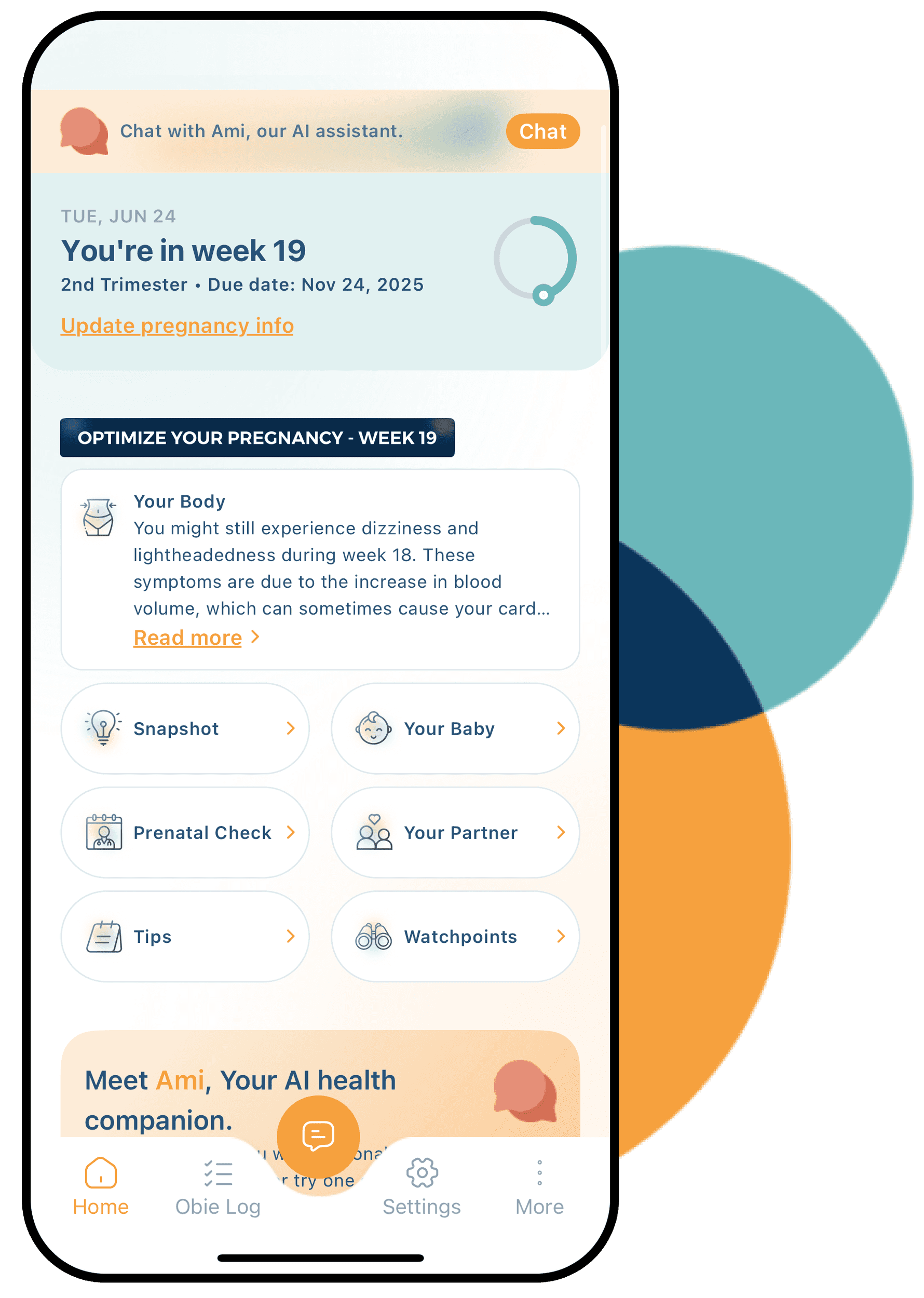hCG Levels Chart and Calculator
Pregnancy Tools
Obie Editorial Team

This hCG Calculator helps you track and interpret your HCG levels during pregnancy, offering valuable insights into your progress. By inputting your HCG test results and the time between them, this tool calculates the doubling time—a key indicator of healthy pregnancy development. You can also compares your levels to expected ranges for your stage of pregnancy, giving you a clear picture of whether things are on track.
hCG Levels Chart and Calculator
Get Week by Week Support for your Pregnancy
With Obie’s AI-powered insights, you’re in control — tracking what matters, making sense of your symptoms, and managing each stage of pregnancy with confidence.

Download Our App
What is a normal hCG level early in pregnancy?
hCG levels rise during the first 6 to 10 weeks of pregnancy then decline slowly during the second and third trimesters. As your pregnancy develops, the increase slows down significantly. Between 1,200 and 6,000 mIU/ml serum, the hCG usually takes about 72-96 hours to double, and above 6,000 mIU/ml, the hCG often takes over four or more days to double.
It makes little sense to follow the hCG values above 6,000 mIU/ml as at this point the increase is normally slower and not related to how well the pregnancy is doing. In most normal pregnancies at an hCG level below 1,200 mIU/ml, the hCG usually doubles every 48-72 hours. At levels below 6,000 mIU/ml, the hCG levels normally increase by at least 60% every 2-3 days. A rise of at least 35% over 48 hours can still be considered normal.
Normal hCG doubling times
| hCG Level | Doubling Time Expected |
| Under 1,200 mIU/ml | Between 30 and 72 Hours |
| 1200-6000 mIU/ml | Between 72 and 96 Hours |
| Over 6,000 mIU/ml | Over 96 Hours |
What is a slow hCG rise?
Slower than expected hCG increases are more consistent with abnormal pregnancies such as miscarriages and ectopic pregnancies, and decreases are usually associated with failed pregnancies such as miscarriages or chemical pregnancies.
In many early pregnancies, the hCG level will double every 31 to 72 hours. As the pregnancy progresses, hCG levels rise and the doubling time increases.
- In a study of 20 patients in the first 40 days of pregnancy, the hCG concentration rose by at least 66 percent every 48 hours in 85 percent of viable IUPs; but still, 15 percent of viable pregnancies had a rate of hCG rise less than this threshold. (Kadar 1981)
- An increase of >=35% in 48 hours can still be considered normal (Seeber 2006; Morse 2012)
After 6-7 weeks of the pregnancy, the best indication of a healthy pregnancy is a good fetal heartbeat on a sonogram. Blood hCG levels are not very helpful to test for the viability of the pregnancy if the hCG level is well over 6,000 and/or after 6-7 weeks of the pregnancy. Instead, a sonogram should be done to confirm the presence of a fetal heartbeat. Once a fetal heartbeat is seen, it is not recommended to check the pregnancy viability with hCG levels anymore.
How does hCG change throughout pregnancy?
After two to three months, the increase will slow even further, and eventually, hCG levels may even decline before reaching a plateau for the duration of the pregnancy. Doctors will often use the quantitative blood test if they are closely monitoring the development of pregnancy but above a level of about 6,000 mIU/ml that makes no sense because at this point a sonogram provides better information about the pregnancy.
One single hCG value does not tell you much about the viability of the pregnancy and there is a wide range of normal hCG levels in pregnancy. In fact, one of the problems with doing urine pregnancy testing is that many women who have irregular periods are unsure exactly when ovulation/fertilization happened. That is why adjusting hCG levels for ovulation instead of by last periods provide more exact normalized hCG tables. In general, the best indication of a healthy pregnancy other than a normal rise of hCG is a good fetal heartbeat after 6-7 weeks.
Sources:
- Barnhart KT, Sammel MD, Rinaudo PF, et al. Symptomatic patients with an early viable intrauterine pregnancy: HCG curves redefined. Obstet Gynecol 2004; 104:50.
- Silva C, Sammel MD, Zhou L, et al. Human chorionic gonadotropin profile for women with ectopic pregnancy. Obstet Gynecol 2006; 107:605.
- Kadar N, Caldwell BV, Romero R. A method of screening for ectopic pregnancy and its indications. Obstet Gynecol 1981; 58:162.
- Seeber BE, Sammel MD, Guo W, et al. Application of redefined human chorionic gonadotropin curves for the diagnosis of women at risk for ectopic pregnancy. Fertil Steril 2006; 86:454.
- Morse CB, Sammel MD, Shaunik A, et al. Performance of human chorionic gonadotropin curves in women at risk for ectopic pregnancy: exceptions to the rules. Fertil Steril 2012; 97:101.
- Kadar N, DeVore G, Romero R. Discriminatory hCG zone: its use in the sonographic evaluation for ectopic pregnancy. Obstet Gynecol 1981; 58:156.
Read More






